Saving the Tiger: What You Need to Know About Tiger Conservation Status.
Tiger conservation status
Tigers are one of the most iconic and beloved animals in the world. However, these majestic creatures are under threat from human activities, such as poaching, habitat loss, and human-wildlife conflict. As a result, the conservation status of tigers is critical, and urgent action is needed to protect them from extinction.
Conservation Status of Tigers
The conservation status of tigers is assessed by the International Union for Conservation of Nature (IUCN), which is the world's leading authority on the conservation status of species. Currently, all subspecies of tigers are classified as endangered, except for the Amur tiger, which is classified as critically endangered. This means that the populations of these magnificent creatures are declining, and they are at high risk of extinction.
Threats to Tigers
There are several threats to tigers that have contributed to their declining populations. One of the main threats is habitat loss, which is caused by deforestation, urbanization, and agriculture. This loss of habitat makes it harder for tigers to find prey and increases the risk of human-wildlife conflict. Another significant threat is poaching, which is driven by the demand for tiger parts in traditional medicine and as luxury goods. Climate change is also a growing threat to tigers, as it affects their habitat and prey.
Conservation Efforts
Despite the threats to tigers, there are many conservation efforts underway to protect them. Governments, NGOs, and conservation organizations are working together to preserve tiger habitats, reduce poaching, and promote sustainable development. These efforts include anti-poaching patrols, habitat restoration, and captive breeding programs. In addition, education and awareness campaigns are being conducted to promote responsible tourism and reduce demand for tiger products.
What You Can Do
There are several ways you can help protect tigers and support their conservation efforts. You can start by learning more about tigers and their conservation status and sharing this information with others. You can also support organizations that work to protect tigers, either by making a donation or volunteering your time. Finally, you can make responsible choices when traveling, such as avoiding tiger-related tourist activities and choosing sustainable products.
Conclusion
The conservation status of tigers is critical, and we all have a role to play in protecting these magnificent creatures. By supporting conservation efforts, raising awareness, and making responsible choices, we can help ensure that tigers continue to roam the forests and grasslands for generations to come.
Tiger diet
Tigers are the largest and most powerful cats in the world, and they have a reputation for being fearsome predators. Their diet is an essential part of their survival, and understanding what they eat is crucial for their conservation. Let's explore the tiger diet and what these magnificent creatures need to survive.
What Do Tigers Eat?
Tigers are carnivores, which means they eat meat. Their diet primarily consists of large ungulates, such as deer, wild boar, and buffalo. They also eat smaller animals, including monkeys, birds, fish, and reptiles. Tigers are opportunistic hunters and will take advantage of any prey that they come across.
How Do Tigers Hunt?
Tigers are ambush predators, which means they rely on stealth and surprise to catch their prey. They are incredibly patient and can stalk their prey for hours or even days before making a move. Once they get close enough, they will pounce on their prey, usually aiming for the neck or throat to deliver a fatal bite. Tigers are incredibly strong and can take down prey that weighs more than ten times their weight.
How Much Do Tigers Eat?
Tigers have a massive appetite and can consume up to 90 pounds of meat in a single meal. However, they don't always eat this much and will typically consume around 10-15 pounds of meat per day. They can go several days without food if necessary, but they will usually hunt every two to three days.
What Happens When Tigers Can't Find Enough Food?
Tigers require a lot of food to survive, and when their prey is scarce, they can become vulnerable to starvation. This is why habitat loss and poaching are such significant threats to tiger populations. In times of scarcity, tigers may resort to preying on livestock, which can lead to human-wildlife conflict.
Conclusion
The tiger diet is an essential part of their survival, and understanding what they eat is crucial for their conservation. Tigers are fierce predators that require a lot of food to survive. Their diet primarily consists of large ungulates, but they will also eat smaller animals. Tigers are incredibly strong and can take down prey that weighs more than ten times their weight. It is important to protect the habitats and prey of tigers to ensure their survival and prevent human-wildlife conflict.
Tiger stripes
The stripes of a tiger are one of the most recognizable patterns in the animal kingdom. These majestic creatures are known for their bold and striking stripes that adorn their fur. But what is the purpose of these stripes, and how do they help tigers survive in the wild? Let's take a closer look at tiger stripes.
What Are Tiger Stripes?
Tiger stripes are black or dark brown stripes that run vertically down a tiger's body. The stripes are unique to each tiger and serve as a form of identification. A tiger's stripes can also vary in size, shape, and spacing, making them distinctive to each individual.
Why Do Tigers Have Stripes?
The stripes of a tiger serve several functions. First, they provide camouflage in their natural environment. The vertical stripes break up the tiger's outline, making it more difficult for prey to detect them. The stripes also help tigers blend in with their surroundings, which is essential for successful hunting and avoiding predators.
In addition to camouflage, tiger stripes also play a role in social communication. Tigers use their stripes to signal to other tigers, marking their territory and indicating their mood or intentions. The patterns and spacing of the stripes can communicate aggression or submission, and tigers can use their stripes to establish dominance.
How Do Tiger Stripes Develop?
The exact way in which tiger stripes develop is not fully understood, but it is believed to be a combination of genetic and environmental factors. The pattern is determined by the arrangement of pigment cells called melanocytes, which produce the dark stripes against a lighter background.
The stripes of a tiger may also change as they age. Tigers born with faint stripes may develop bolder patterns as they grow older. Similarly, tigers with bold stripes may have their patterns fade over time, becoming less visible as they age.
Conclusion
Tiger stripes are not only beautiful, but they also serve a critical function in a tiger's survival. The stripes provide camouflage and help tigers blend in with their surroundings, making them more effective hunters and helping them avoid predators. They also play a role in social communication, allowing tigers to establish dominance and mark their territory. While the exact way in which tiger stripes develop is not fully understood, we know that they are determined by a combination of genetic and environmental factors. Protecting the habitats of tigers is essential to their survival, and understanding the unique traits and characteristics of these majestic creatures can help us appreciate and protect them for future generations.
Tiger lifespan
Tigers are one of the world's most iconic big cats, known for their impressive size, strength, and beauty. But how long do these magnificent creatures live? Let's take a closer look at the tiger lifespan.
Average Tiger Lifespan
In the wild, tigers have an average lifespan of 10 to 15 years. However, in captivity, tigers can live much longer, with some reaching 20 years or more. The lifespan of a tiger can vary depending on several factors, including genetics, diet, habitat, and health.
Factors That Affect Tiger Lifespan
Genetics: The lifespan of a tiger can be influenced by genetics. For example, some subspecies of tigers, such as the Siberian tiger, are known to live longer than others.
Diet: Diet can also play a significant role in a tiger's lifespan. Tigers in the wild face challenges finding food, which can impact their overall health and longevity. In captivity, tigers have access to a more consistent and nutritious diet, which can help them live longer.
Habitat: The habitat of a tiger can also impact their lifespan. Tigers in protected areas and national parks tend to live longer than those in areas with human disturbance, where they face threats from poaching, habitat loss, and other factors.
Health: Tigers, like all animals, can suffer from diseases and illnesses that can impact their lifespan. For example, tigers that contract diseases such as feline immunodeficiency virus (FIV) or feline infectious peritonitis (FIP) may have a shorter lifespan.
Conservation Efforts for Tiger Lifespan
Tigers are currently listed as endangered by the International Union for Conservation of Nature (IUCN). Habitat loss, poaching, and human-wildlife conflict are among the biggest threats to tigers in the wild. To help protect tiger populations and increase their lifespan, conservation efforts are focused on preserving tiger habitats, reducing poaching, and promoting responsible tourism practices.
Conclusion
Tigers are magnificent animals with a lifespan that varies depending on several factors, including genetics, diet, habitat, and health. In the wild, tigers have an average lifespan of 10 to 15 years, while those in captivity can live longer. Protecting tiger habitats and reducing threats from poaching and habitat loss are critical to ensuring that tigers continue to thrive and live long, healthy lives. By supporting conservation efforts and promoting responsible tourism practices, we can help protect these majestic creatures for future generations.
Tiger population
Tigers are among the world's most iconic and endangered big cats. The wild tiger population has been in decline for decades due to a range of threats, including habitat loss, poaching, and human-wildlife conflict. Let's take a closer look at the current state of the tiger population.
Current Tiger Population
According to the latest data from the World Wildlife Fund (WWF), there are an estimated 3,900 wild tigers remaining in the world. This represents a slight increase from the 2010 estimate of 3,200, but the overall trend is still concerning. Tigers are currently found in 13 countries across Asia, including India, Russia, and Indonesia.
Threats to the Tiger Population
Habitat Loss: One of the biggest threats to the tiger population is habitat loss. As human populations expand, tiger habitats are being destroyed and fragmented, leaving tigers with less space to roam and hunt.
Poaching: Tigers are also threatened by poaching, as their skins, bones, and other body parts are in high demand for use in traditional medicine and as luxury goods. In some areas, tigers are also hunted for their meat.
Human-Wildlife Conflict: As tiger habitats shrink and tigers are forced into closer proximity to human populations, conflicts can arise. Tigers that prey on livestock or humans are often killed in retaliation, further threatening the tiger population.
Conservation Efforts for Tiger Population
To help protect the tiger population, conservation efforts are focused on several key areas
Habitat Protection: Protecting tiger habitats is critical to ensuring the long-term survival of the species. This includes creating and maintaining protected areas, establishing corridors to connect fragmented habitats, and working with local communities to promote sustainable land use practices.
Anti-Poaching Measures: To combat poaching, conservationists are working to increase law enforcement efforts, strengthen penalties for wildlife crimes, and reduce demand for tiger products through education and awareness campaigns.
Human-Wildlife Conflict Mitigation: To reduce conflicts between tigers and humans, conservationists are working to promote alternative livelihoods for local communities, establish early warning systems to alert people to tiger activity, and implement non-lethal methods of protecting livestock.
Conclusion
The tiger population is in a precarious state, with habitat loss, poaching, and human-wildlife conflict threatening the survival of these magnificent creatures. However, conservation efforts are making a difference, with some populations showing signs of recovery. By supporting conservation efforts and raising awareness about the importance of protecting tigers, we can help ensure that these iconic big cats continue to roam wild for generations to come.
Tiger behavior
Tigers are one of the world's most powerful and majestic animals, and their behavior is a fascinating subject of study for wildlife enthusiasts and researchers alike. Let's take a closer look at the behavior of these magnificent big cats.
Social Behavior
Tigers are solitary animals, except during mating season or when a mother is raising her cubs. Male tigers establish territories that they defend against other males, while female tigers establish smaller territories and allow their offspring to share the space until they are old enough to venture out on their own. Tigers use scent marking and vocalizations to communicate with each other and to establish their territories.
Hunting Behavior
Tigers are apex predators and hunt a wide range of prey, including deer, wild boar, and even larger animals like buffalo and bison. They are solitary hunters and rely on stealth and speed to catch their prey. Tigers are known for their powerful jaws and sharp teeth, which they use to deliver a fatal bite to their prey.
Reproductive Behavior
Tigers mate between November and April, with most mating occurring between January and March. Female tigers give birth to litters of 2-4 cubs after a gestation period of 3-4 months. The cubs are born blind and helpless and are raised by their mother until they are around 2 years old. Male tigers do not play a role in raising the cubs.
Communication Behavior
Tigers communicate with each other using a range of vocalizations, including roars, growls, and snarls. They also use scent marking to communicate with other tigers and to establish their territories. Tigers have a highly developed sense of smell and use their urine, feces, and scent glands to mark their territories and communicate with other tigers.
Behavioral Adaptations
Tigers have a range of behavioral adaptations that help them survive in their natural environment. These include their solitary hunting behavior, their use of stealth and speed to catch prey, and their ability to adapt to a range of different habitats. Tigers also have a unique hunting strategy that involves stalking their prey from downwind to avoid being detected by their keen sense of smell.
Conclusion
Tiger behavior is a fascinating subject of study, and understanding the behavior of these magnificent big cats is critical to their conservation. By learning more about the behavior of tigers, we can better protect their habitats and ensure that these iconic animals continue to thrive in the wild.
Tiger range
Tigers are one of the most iconic big cats in the world, and their range spans across a diverse range of habitats, from tropical forests to snow-covered mountain ranges. Let's take a closer look at the range of tigers and the factors that influence their distribution.
Geographic Range
Tigers are found in Asia, with their range extending from India and Bhutan in the west to Russia and China in the north and east. The range of tigers includes a diverse range of habitats, including tropical and subtropical forests, mangrove swamps, grasslands, and even high-altitude mountain regions.
Factors Influencing Tiger Range
The geographic range of tigers is influenced by a range of factors, including climate, habitat availability, and human activities. Climate plays a critical role in the distribution of tigers, with the animals preferring tropical and subtropical regions with high rainfall and temperatures.
Habitat loss and degradation are major threats to the range of tigers. As human populations continue to expand and encroach on tiger habitats, the animals are losing their natural homes at an alarming rate. Habitat fragmentation is also a significant issue, with large tiger populations being isolated and unable to interact with other populations, leading to genetic problems and a decline in overall population health.
Conservation Efforts
Conservation efforts are critical to protecting the range of tigers and ensuring their long-term survival in the wild. Organizations like the World Wildlife Fund (WWF) and the Wildlife Conservation Society (WCS) are working to protect and restore tiger habitats, reduce human-tiger conflict, and combat illegal poaching and trade in tiger products.
Conclusion
The range of tigers is a critical factor in their conservation, and understanding the factors that influence their distribution is essential for protecting these iconic big cats. By working to conserve and restore tiger habitats and reducing human-tiger conflict, we can help ensure that tigers continue to thrive in the wild for generations to come.
Tiger threats
Tigers are one of the most iconic big cats in the world, but they are also facing a range of threats that are putting their long-term survival at risk. From habitat loss to poaching and illegal trade, let's take a closer look at the challenges facing these majestic animals.
Habitat Loss and Fragmentation
Habitat loss is one of the biggest threats facing tigers. As human populations continue to grow and expand, they are encroaching on tiger habitats, destroying forests and other critical ecosystems that these big cats depend on. Habitat fragmentation is also a significant issue, with large tiger populations being isolated and unable to interact with other populations, leading to genetic problems and a decline in overall population health.
Poaching and Illegal Trade
Poaching and illegal trade in tiger parts are major threats to the survival of these big cats. Tigers are hunted for their skins, bones, and other body parts, which are used in traditional medicine and as status symbols. Despite efforts to combat this illegal trade, it continues to be a major problem, with demand for tiger products driving the poaching of these animals.
Human-Tiger Conflict
Human-tiger conflict is a significant challenge facing tiger conservation efforts. As human populations grow and expand into tiger habitats, conflicts between people and tigers are increasing. Tigers may prey on livestock, which can cause economic losses for local communities, and in some cases, tigers may attack and kill people, leading to fear and anger towards these big cats.
Climate Change
Climate change is also a significant threat to tigers, as changing weather patterns and other environmental factors are impacting their habitats and prey. As temperatures rise, forests are becoming drier, which can reduce the availability of prey for tigers. Changes in rainfall patterns can also impact the availability of water, which can be critical for both tigers and their prey.
Conservation Efforts
Despite the many threats facing tigers, there are also significant conservation efforts underway to protect these big cats. Organizations like the World Wildlife Fund (WWF) and the Wildlife Conservation Society (WCS) are working to protect and restore tiger habitats, reduce human-tiger conflict, and combat illegal poaching and trade in tiger products.
Conclusion
Tigers are facing a range of threats, from habitat loss and fragmentation to poaching and illegal trade. By working to address these challenges and protect tiger habitats, we can help ensure that these majestic big cats continue to thrive in the wild for generations to come.
Tiger cubs
Tiger cubs are among the most adorable and fascinating creatures in the animal kingdom. Born blind and helpless, these big cats grow rapidly over the first few months of their lives, developing key skills and abilities that will help them survive in the wild.
Birth and Early Life
Tiger cubs are typically born in litters of 2-4, after a gestation period of approximately 3.5 months. At birth, the cubs are blind and weigh only a few pounds. Their eyes begin to open after about 2 weeks, and they start to gain weight and grow rapidly.
Nursing and Weaning
Tiger cubs nurse from their mother for the first few months of their lives. During this time, they rely on their mother's milk for all of their nutritional needs. As they grow, they begin to explore their surroundings and play with their siblings, developing important social and physical skills.
Around 2-3 months of age, tiger cubs start to eat solid food, such as small pieces of meat, brought to them by their mother. This is the beginning of the weaning process, which lasts for several months until the cubs are fully independent.
Learning and Development
As tiger cubs grow, they begin to learn critical skills that will help them survive in the wild. They practice stalking and pouncing on objects and each other, developing the coordination and strength they will need as adult tigers. They also learn from their mother, watching her hunt and interact with the environment around them.
By the time they reach 6-8 months of age, tiger cubs are typically fully weaned and ready to start exploring on their own. They may still stay with their mother for a few more months, learning more about survival in the wild and continuing to develop their skills.
Conservation Efforts
Tiger cubs, like all tigers, are facing significant threats to their survival in the wild, including habitat loss, poaching, and human-tiger conflict. Conservation efforts are crucial to protect these adorable big cats and ensure that they continue to thrive in the wild for generations to come.
Conclusion
Tiger cubs are fascinating creatures that offer a glimpse into the early life of these majestic big cats. By understanding the development and challenges faced by tiger cubs, we can gain a greater appreciation for the importance of conservation efforts to protect these amazing animals.
Tiger evolution
The evolution of tigers is a complex and fascinating process that has taken millions of years to unfold. From their early ancestors to the present-day species we know and love, tigers have undergone significant changes and adaptations to survive and thrive in the wild.
Early Ancestors
The earliest ancestors of modern tigers date back to the Miocene epoch, around 23-5 million years ago. These small, cat-like creatures were known as sabre-toothed cats, and they were characterized by their long, curved canine teeth that they used to hunt prey.
Over time, these early cats evolved into a diverse range of species, including the Panthera genus that includes tigers, lions, leopards, and jaguars. The earliest ancestor of modern tigers was the Panthera zdanskyi, which lived in China around 2 million years ago.
Development of Modern Tigers
Modern tigers are believed to have evolved from a common ancestor around 1.5 million years ago. Over time, these early tigers spread across Asia, adapting to the various habitats and environments they encountered.
One of the most notable adaptations of modern tigers is their size and strength. Tigers are the largest of all the big cats, with some species weighing over 600 pounds. They also have powerful muscles, sharp teeth, and keen senses that make them formidable predators in the wild.
Conservation Efforts
Despite their size and strength, tigers are facing significant threats to their survival in the wild, including habitat loss, poaching, and human-tiger conflict. As a result, conservation efforts are crucial to protect these majestic big cats and ensure that they continue to thrive in the wild for generations to come.
Conclusion
The evolution of tigers is a complex and fascinating process that has taken millions of years to unfold. From their early ancestors to the modern-day species we know and love, tigers have undergone significant changes and adaptations to survive and thrive in the wild. By understanding the history and development of tigers, we can gain a greater appreciation for the importance of conservation efforts to protect these amazing animals.
Here are 6 FAQs about Tiger:
A tiger is a large carnivorous feline that is native to Asia. It is one of the biggest cats in the world and is easily recognized by its orange coat with black stripes.
2. Where do tigers live?
Tigers are found in a range of habitats across Asia, including forests, grasslands, and wetlands. They are most commonly found in countries such as India, Bangladesh, Indonesia, Malaysia, and Russia.
3. How many subspecies of tigers are there?
There are currently six subspecies of tigers recognized by scientists, including the Bengal tiger, Indochinese tiger, Siberian tiger, Malayan tiger, South China tiger, and Sumatran tiger.
4. What do tigers eat?
Tigers are carnivores and their diet mainly consists of large prey, such as deer, wild boar, and water buffalo. However, they have been known to eat smaller animals like birds and fish if their primary prey is not available.
5. Are tigers endangered?
Yes, all subspecies of tigers are currently classified as endangered or critically endangered by the International Union for Conservation of Nature (IUCN). Their populations have declined significantly in recent years due to habitat loss, poaching, and other human-related activities.
6. Can tigers swim?
Yes, tigers are excellent swimmers and are known to swim across rivers and lakes in search of prey. They are one of the few big cat species that actually enjoys being in the water.
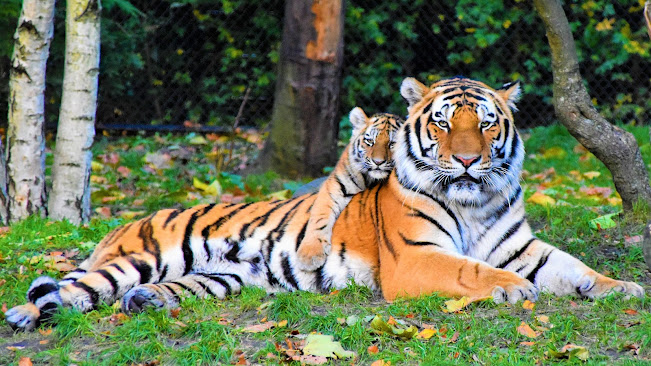
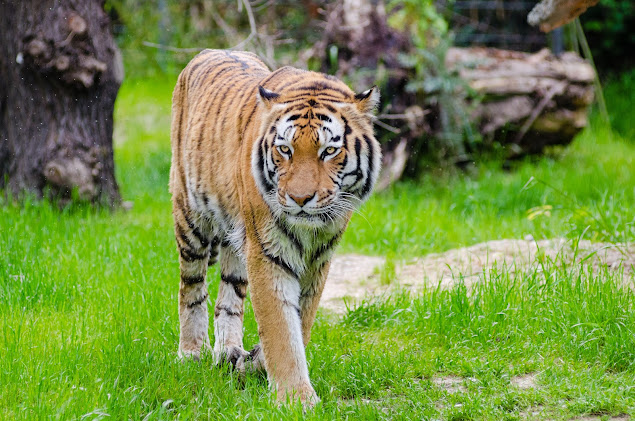
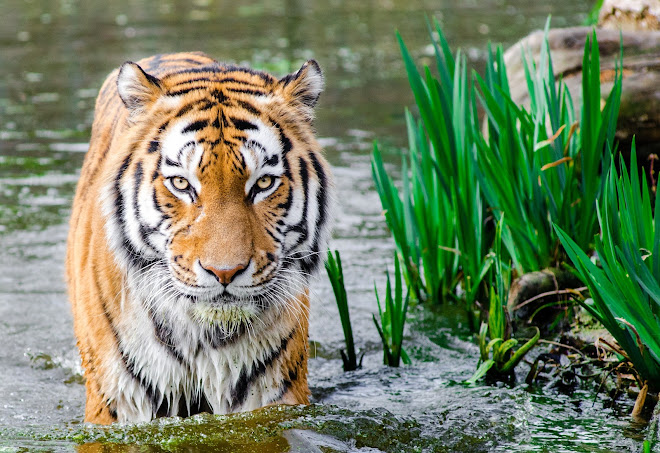
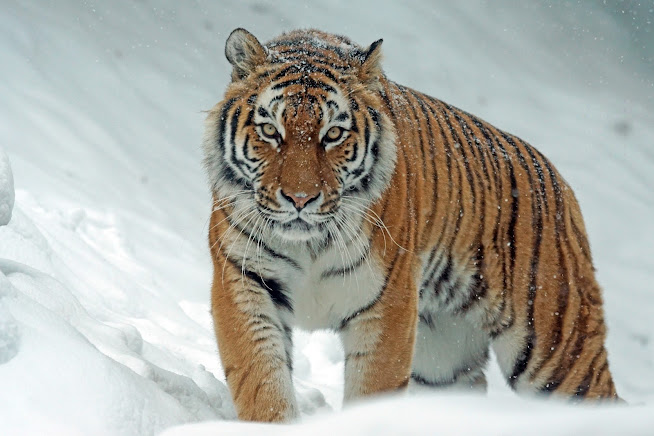




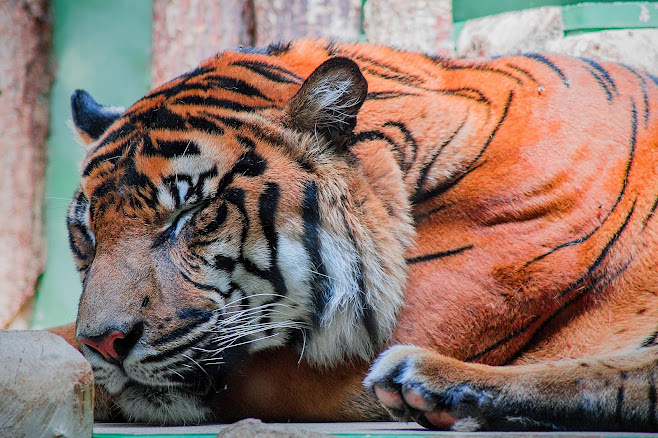

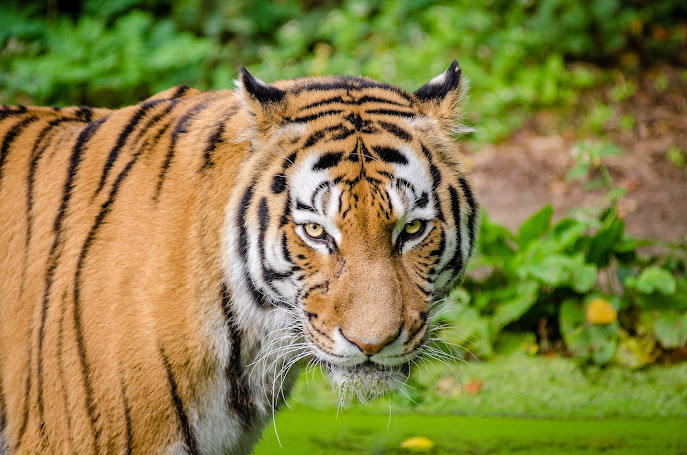
-133408.jpg)



Comments
Post a Comment